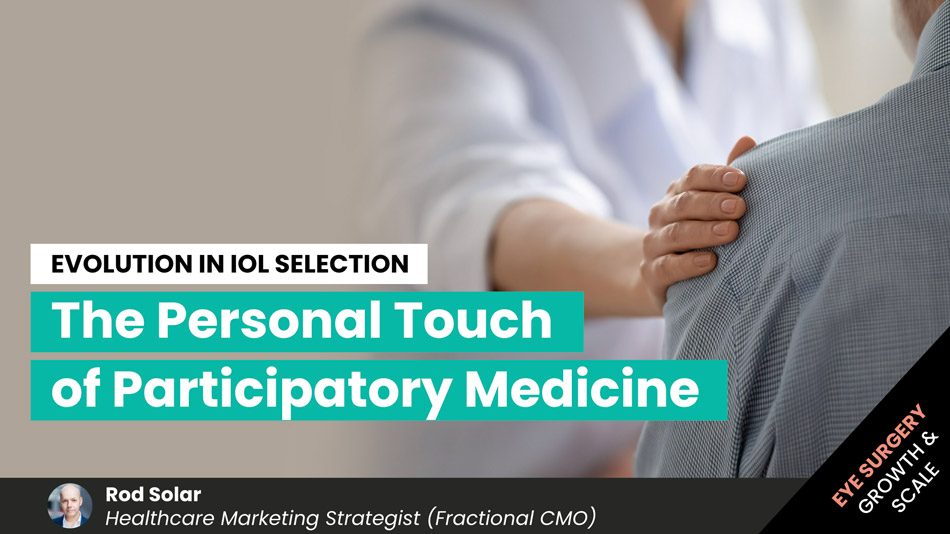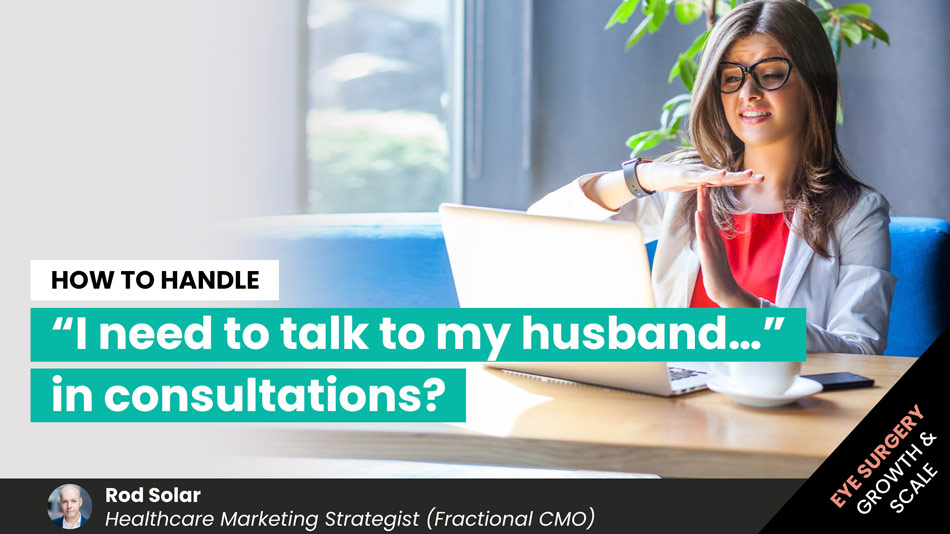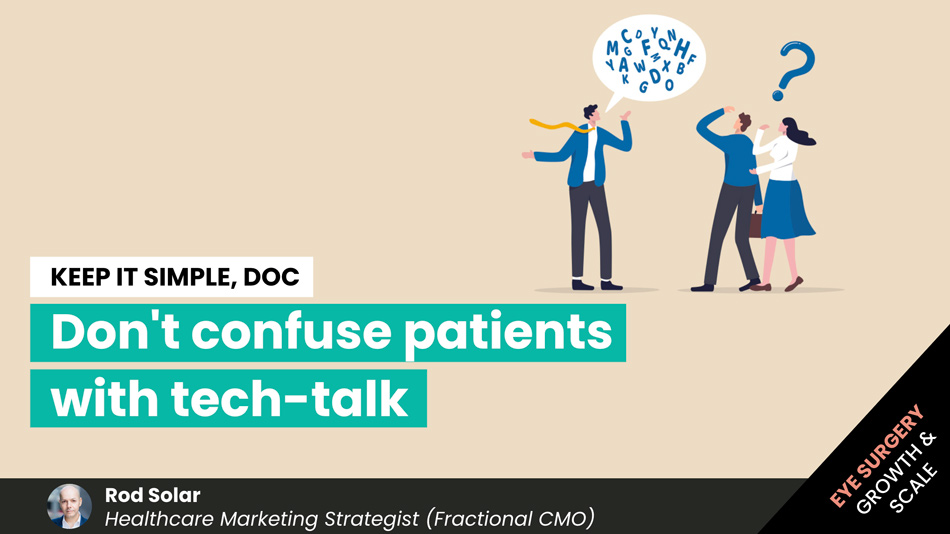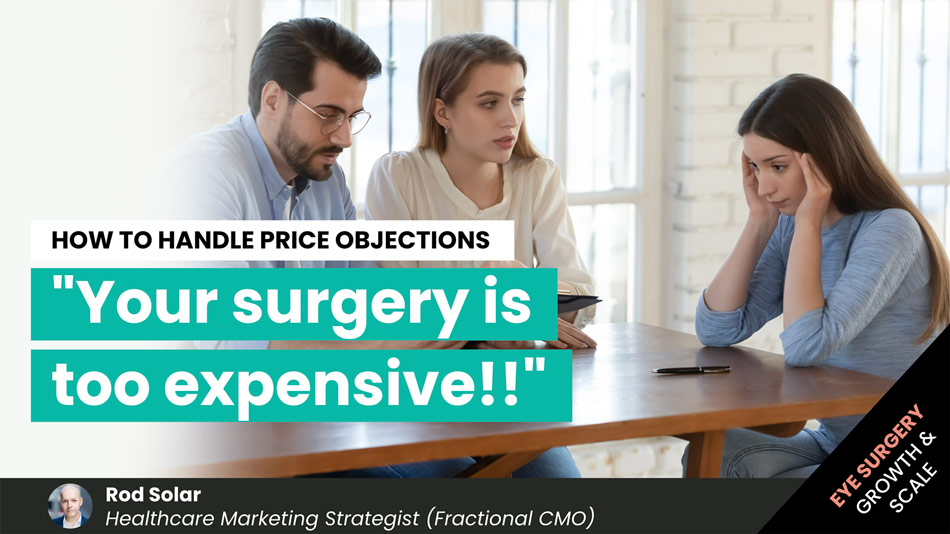How to run world-class first appointments
Note: This is an edited transcript of the material we present in the above podcast episode.
In today’s podcast, we’re talking about the patient journey. What I mean by that is the patient journey at the most relationship-oriented step that you can begin in the middle of the marketing process. That is the first appointment, which is the first time you generally shake hands with somebody and get involved with them.
So we’re going to walk you through it, and I’m going to be the patient. So we will take you through, and you can experience what it’s like to have an ideal initial appointment.
So, Rod, I’ve booked my appointment. I’ve had an excellent phone call. I’ve trusted the person on the end of the phone enough to say, “Okay. Yeah. I’ve maybe talked to two or three clinics and thought,
“Yeah. Okay. This is the one I want to see.”
Or perhaps I’m even going to two. Let’s just pretend I’m going to two. So I’ve booked an appointment. I’m coming to see you. So what happens next? If you’re giving me the ideal experience?
It starts with the confirmation letter
Rod Solar:
Okay. Well, it all starts by laying the groundwork and setting the scene. I like this kind of theatrical language because it really is all about theatre, about being on stage versus being offstage. I’ll get into that in a moment.
So how do you set the scene? Well, it all begins with the confirmation letter, and that’s a step a lot of people kind of overlook. That confirmation letter has to be exciting. It’s got to tell people what to expect. It has to take personal responsibility and be written on a one-to-one level, in terms of a personal tone.
If you’re in the high-price category, it should give them an idea of what you charge. I’m not expecting you to send a whole price list, like a menu or something like that, but it should give them a guide. Otherwise, you’ll end up having people show up at your practice who have no intention of paying what you charge.
Lastly, it needs to tell them everything about what to expect in terms of what you’re going to do for them. It needs to list essential instructions that they need to do or bring to the consultation so that they’re well prepared and, importantly, a form attached to complete that form ahead of time and save you time when they actually get to the consultation.
Laura Livesey:
Okay, nice. So you’ve sent me this, and I didn’t get one from the other player or, let’s say, the other player did send me the typical form letter, which is very superficial and uninteresting. So it’s like, “Okay, already, this clinic is winning.” Okay.
So what’s next? What happens?
The greeting
Rod Solar:
So what’s next is you show up, and here’s what’s important. In our diary, it might say the appointment starts at 9:00. I always like to advise clinics to tell their patient to arrive 15 minutes before, but don’t tell them in that context. Tell them, “Your appointment is at 8:45” for a 9:00 appointment.
Why? Because clinics run late and most people will not bring in their forms. They’ll have to actually fill in their forms. The patient themselves might be late, so this allows us to start on time, even if they’re late.
So once they come in, then here’s what happens. The receptionist identifies who they are, ideally through the camera that’s on the front door. Many Intercom systems have a camera and then know that you’re actually walking in. You’re a new patient. They stand up from their desk, extend their hand and welcome the patient to the clinic. That’s number one.
Laura Livesey:
Nice.
Rod Solar:
I want you to think about it, how do people do it in five-star hotels? Are they sitting behind a desk on the phone or talking to their colleagues? If they are, then it’s really doesn’t deserve the five-star moniker. They’ve got to be there, engaged, ready to go.
I advise other people in the practice not to go in the back behind reception and start a conversation or hang out or eat their lunch or all that stuff.
That’s got to be backstage behaviour. That’s offstage. You don’t see the actors hanging around during the big scenes. So what we’re doing here is we’re putting on a play, and this receptionist needs to smile, welcome that patient and be there for them.
Laura Livesey:
Yeah. So I’m already feeling welcomed. I’m already feeling very different to how I feel when I go into most environments. For example, in most business environments in the UK, the reception team is usually disinterested. They’re, literally, just checking boxes. They’re barely breathing, and they really don’t seem like they’re having a perfect time.
So I’m already sort of feeling good, and, again, this is really what we’re after here is to feel good as I go through the process and start to get excited. Okay. So I began to feel slightly excited, so I’ve greeted the receptionist. I feel like, “Okay, I’m a human being. They see that I’m human.”
Rod Solar:
And it goes further than that. The receptionist offers to take your coat and bags and put them in a secure location. Then they say,
“Thank you for coming. I’d like to invite you to complete our registration form if you haven’t brought one already with you. Here it is. It takes about 10 minutes to complete,” if that’s how long it takes.
You give them an indication of what to expect. You also make sure that the patient knows how much time they have so they don’t spend dilly-dallying.
Then the receptionist, who’s standing up already, leads them to their seat and says, “Have a seat.” Once they sit down, they say, “Can I get you tea or coffee?” Then-
Laura Livesey:
So I’m starting to feel really cared for.
Rod Solar:
Oh, yeah. I mean, you should feel like you’re at a spa.
So you’re sat down now, and the receptionist now offers you a tea and coffee and do they say, “Yeah, it’s right over there?” No, they actually go and get-
Laura Livesey:
Which is common.
Rod Solar:
Exactly. The receptionist goes to get the coffee or tea for you. When they return with the tea or coffee, they say,
“There you go. Your patient liaison will be with you in 15 minutes. If you need to use the facilities, it’s right over there. Ask me if you need help. If you need the WiFi, that’s our sign right over there. If you need a phone, just ask me.”
Laura Livesey:
Yeah. That’s excellent. So you’ve thought about me. You’ve considered that I’m in a brand new environment. I have no idea where anything is. I might want to do a quick work thing before my appointment. You’ve basically made me feel welcome, and you’ve taken care of my needs, so I’m feeling excellent.
Rod Solar:
Yeah. Good, good, good.
Now the receptionist fills in some details and alerts the patient liaison. I always recommend clinics have a patient liaison to do this next part of the process.
So the receptionist lets the patient liaison know, “Okay, your patient is here.” So that the patient liaison takes the initiative to get up out of their office at the prescribed moment. But, again, they should be in their own room because they have to have a private conversation with this individual.
That’s often overlooked. In terms of planning a clinic, nobody ever thinks about that. Still, it’s imperative when building in a clinic, you actually put a room for these kinds of conversations.
The Patient liaison comes out and ensures that the patient has completed their form. You know that because the receptionist has probably received it. Then you go to the patient, and you introduce yourself. So I would say,
“Hi, welcome to” whatever the clinic is. “My name is Rod, and I’ll be your patient liaison. I’d invite you to come in and have a chat with me in my office. Is that okay?”
Then the patient says, “Absolutely-”
Laura Livesey:
“Yeah, great.”
Rod Solar:
… and they escort you to the office.
(NOTE: Want to see how your practice marketing measures up against the best in class? Take this 5-minute quiz to see how you stack up in the 9 areas of practice marketing and get specific tips and advice on how you can improve your weak points and better leverage your strengths).
The warm-up
They don’t turn around, walk off, and expect you to chase behind them. The patient liaison walks with you and has a little warmup chat along the way. Basic warmup questions are things like,
“So, how was your journey in? I read you’re from West Sussex. Did it take long for you to get here? What’s the weather like outside?”
All these basic things.
Then they lead you into the room, and they say, “Please take a seat.” So right away, they’re showing leadership. They’re showing the patient that they’re in command, and they’re in control. So the patient doesn’t have to stress or feel like they have to take the lead.
Laura Livesey:
Great. Okay. So now I have met two members of the team. I feel like they’re competent that they know what to do. So what happens to me next?
Rod Solar:
Right. The warmup can continue a little bit. I mean, you’ve shaken hands already, you’ve done the greeting, and there’s a little bit of chit-chat and small talk. I advise patient liaisons never to skip that. I recommend nobody to ignore that because, again, these are human beings, and it’s not a transactional thing…
Laura Livesey:
And just a quick aside, what is the point of that? Why are we warming up? Why do we talk about inane weather things?
Rod Solar:
Yeah. We’re trying to relieve tension. Patients are anxious. When they walk into a new environment, especially a medical one, patients feel nervous about what will happen. They’re a little fearful about what kind of tests they will have. They wonder if they’re going to be found unsuitable. They wonder if the doctor’s going to find something strange. So all these things are going through their head.
Actually, one of the other things, too, is they’re worried about being sold to, and they’re concerned about what the interactions will be like. “Am I going to like them? Are they going to be rude to me?”
Unfortunately, most people in this country don’t have much experience with private health. So, they’re conditioned to not being treated well, and they’re anxious about that. So if you can really, really warm them up and make them feel comfortable, they’re going to open up to you at the next stage, which is super important.
The intent statement
Laura Livesey:
Okay. So I’m ready now to answer some questions, it sounds like.
Rod Solar:
Right. Well, before that, I will tell you what I’m going to do for the day. So, I deliver my intent statement. So, what is that? Well, basically, it’s as simple as this. I tell you what to expect very, very clearly. So, I might start with a question. So, “That’s great. Thanks very much for coming. Laura, do you have any idea of what we plan to do together today?” And you would say…
Laura Livesey:
“No, not really.”
Rod Solar:
“Not really. Or I suppose you’re going to assess me for treatment?”
Laura Livesey:
Means “you’re going to test me or something like that.”
Rod Solar:
“Yeah. Great. Well, here’s what I’m going to do.” So whatever the answer, you just respond with what you’re going to do. “So here’s my agenda.”
In other words, first, we’re going to have a little chat. Then after we have a little chat, I’m going to do during that chat is I’m going to ask you some questions. It’s going to be about your motivations concerns you might have. Anything you want to make sure I flag up to the doctor to discuss.
Laura Livesey:
So, again, you’re getting my needs-
Rod Solar:
Exactly.
Laura Livesey:
… feeling good about that-
Rod Solar:
Yeah, and I let you know beforehand so you-
Laura Livesey:
… getting my input.
Rod Solar:
Exactly, so you know what’s coming.
Then after, I will introduce you to the doctor or the technician who will do your tests, and I’ll explain very, very briefly about that. Then, after you’ve had a quick conversation or had an examination, they’ll provide a recommendation for treatment. Then, if you’re suitable and if you want to be a patient, you will have another little chat. I will provide your scheduling options and instructions on paying for the next step at that chat.
Laura Livesey:
That sounds very straightforward.
Rod Solar:
It’s really upfront, too, and she set expectations about what this whole appointment’s about.
What this does is it provides patients with an understanding that “Okay, I got to take things seriously here. This is real. I’m going through this as a one-time occurrence. And then I’m going to get a recommendation at the end, and I’m going to have to decide. I’m not going to have to go home and think about it,” even though that’s okay, but it gets them thinking about it now.
Another thing that I find it’s essential to do is just to let people know, “Look, we might not have anything for you. We might not be able to help you today. And if that’s the case, we’ll let you know. However, if we can help you, we will be very clear, upfront and recommend the best treatment for you.”
Laura Livesey:
So it’s very pressure-free, it sounds like.
Rod Solar:
Absolutely.
Laura Livesey:
Okay. Okay, great. So they’re not going to try to force me-
Rod Solar:
Exactly.
Laura Livesey:
… or twist my arm into something I don’t want.
Rod Solar:
It also changes the power dynamic because as soon as you say that to a patient, they go, “Oh, my, I really want what you have. That’s why I’m here.” But you’re saying, “We invite many, but we choose few.” What that does is it creates a power-dynamic shift where the patient now wants to buy, as opposed to feels like they’re being sold. Very, very important.
Lastly, you confirm, “Is everything okay for me to move forward?” They say yes. Okay, great. Now you get on to the questioning stage. Now we don’t have time to get into every single question, but let me really briefly summarize it like this.
The discovery
First of all, you have to ask all about what’s going on now, what’s happening before. You have to understand what their challenges are. Well-
Laura Livesey:
So the before state that we’ve talked a lot about in other podcasts.
Rod Solar:
The before state. Yeah, and it all transitions through. I mean, so that’s why that customer avatar work is so, so important that before and after grid is so important to write out. Then, once you’ve done that, you ask them. “What’s happening before? What’s going on, and how do you feel about that? And then how does that impact your life?”
I’ll give you a quick example.
First. “So tell me, what’s the challenge that you’re coming here for today?” You might say, “Well, I wear glasses. I want to get rid of them.” “Okay. That’s great. Fantastic.” Job one.
Number two. “Well, how do you feel about wearing glasses? How does that make you feel?” And you, “Oh, I hate them. I really don’t like them.”
Third. “Okay. So what kind of impact has that had on your life so far? What kind of things have you not been able to do as a result of being dependent on glasses?” So the patient starts going into, “Well, I’d like to do more sports. I’d like to have more convenience. I’d like to have more freedom.”
They start getting emotional, and that’s exactly where you want to go. Because emotion is what compels people to make decisions. Emotion gets people to say yes and then justify it with logic.
So the first four questions that I make sure people ask to relate to the before state, specific incidents that they disliked about their condition and the after state that they’re looking to be in.
Laura Livesey:
So why am I here, basically? What do I want after all this?
Rod Solar:
Yeah. How do you want life to be?
Laura Livesey:
Kind of essential for the practitioner to know.
Rod Solar:
Absolutely essential.
Laura Livesey:
Maybe you can’t do it.
Rod Solar:
Yeah, yeah, exactly. Yeah, exactly. If they come to you and say, “Oh, I want you to make me look like Nicole Kidman,” you might go, “Okay, this is an important note here that perhaps…” And they’re coming in looking like Tom Cruise, then you might be thinking, “Okay, maybe this is something we can’t do.” So you need to make sure that you alert people further down the chain as the patient liaison about what’s going on.
Then you ask numerous questions to justify the rationality behind it, just to provide them with a support structure on which to make a decision.
Finally, you just make sure you confirm certain elements. Number one, you affirm, “Okay. I understand; here’s where you are before. Secondly, I understand where you want to go after, and I understand here’s when you want to do it by.” That’s the Deadline. Once you know those three things, I basically summarize them as B-A-D, BAD, you understand them Before, you know the After, and the Deadline. If you got that, then you say, “If I can do all that for you, is that something you’d be interested in?” And the patient says, “Yeah, of course,” right, “that’s why I’m here.” Exactly.
But basically, what you’ve done is you’ve gotten the patient to say the first “yes”, and all these “yeses” then cascade after that.
Laura Livesey:
Yeah. Yeah. Okay. So I’ve said yes, and I’ve become more psychologically invested-
Rod Solar:
Correct.
Laura Livesey:
… in the process. I’m excited, too, because I’ve spoken about my desires. I’ve talked about the things I’m moving away from, and it reminds me, “Oh, yeah. That’s why I came here,” because I booked this consult maybe three weeks ago. “Oh, yeah. Right. Okay.” Because it’s been okay in the last three weeks, it hasn’t been as much of a hassle, but today, “Okay, right. Yeah. That’s why I’m here. I’m taking my glasses on and off all the time. It’s a real hassle. I do want to get rid of this.”
Then, “Ah, actually, it sounds like I could get this. It sounds like you can do it. And I’ve got a wedding coming up in three months, and, hey, wouldn’t it be nice if I could be rid of them by then?” So now I’m excited. “Maybe this could work for me.” I’m not sold, and I’m not ready to buy, but I’m excited about the potential, really.
Rod Solar:
Absolutely. Yeah. I mean, you’re much further along than you were when you came in.
Laura Livesey:
Yeah, absolutely.
Rod Solar:
So now, my job as a patient liaison is to introduce you to the practitioner. I mean, in some clinics, that’s like a technician. It might be a nurse. It might be an optometrist. It might be a hygienist. It could be any of these different things.
So I make sure I inform the next person in the line what’s going on so that they can better deal with you as an individual. So they have a little more information. So I’ve taken excellent notes, and I’ve passed these notes along in the file.
The handover
Laura Livesey:
And do you inform them in front of me as the patient? Or do you tell them sort of privately before you introduce me?
Rod Solar:
I typically go offstage, first of all, to inform the person about what to expect. Say I’m talking to an optician or an optometrist. I go, “Okay. Here’s the story. Here’s what they want, and here’s where they are now.” Well, actually, “Here’s where they’re now, here’s what they want and here’s the deadline.” That’s what I focus on.
Then if there’s time, and there’s not always time in diaries to do this, and we have to be flexible with this, but if there’s time, I go and get the patient.
(NOTE: Want to see how your practice marketing measures up against the best in class? Take this 5-minute quiz to see how you stack up in the 9 areas of practice marketing and get specific tips and advice on how you can improve your weak points and better leverage your strengths).
The information confirmation
I bring them to the office where the practitioner is, and I introduce them aloud in front of everybody. It’s what we call a three-way handover. So what I do over there is, I might say,
“Doctor,” if they’re a doctor, I say, “This is Laura. Laura is (in this particular before state). She wears glasses, and she really doesn’t like them. It’s having a big impact on the freedom she enjoys in her life. So she would like to (go to this after state).”
Now I’m not saying these words before and after, but I’m just telling that to be instructive.
“She would like to be free of those glasses 100%, and she wants to really experience what it’s like to be at that wedding three weeks from now, glasses-free. So she’d like it done as soon as possible because that wedding, after all, is in three weeks.”
So I’ve really linked up what I’m about to offer and what I’m priming the optometrist to do with your life, Laura, so you’re like, “Okay, I get this. This is for me.”
Laura Livesey:
It also feels really good because I really hate it when you go into a place, you tell your whole life story to the first person and then the next person is like, “And you are?” They don’t know anything about me. So you’ve basically saved me time and hassle because you’ve done it in front of me, and I know that it’s been passed on, so I don’t have to repeat myself, basically.
The examination
Rod Solar:
Yeah. So I have loads and loads of instructions I give technicians on how to explain tests that they do, how to name them, how to tell people what they’re going to feel, how to say if they’re special, things like that. I also instruct all sorts of medical clinicians on doing the same thing.
I will just jump beyond that because it’s all part of the training, but it would take a long, long time to get through them, and I know that we have as much time. So really, what I’ll focus on is, for example, the last person, the consultant or the surgeon. Or, maybe in some cases, it’s the optometrist. It could be another clinician who needs to make a firm recommendation, so this is critical.
The recommendation
First of all, they have to communicate to the patient, “Okay, look, I understand where you’ve been before.” So here we are, again, B. “I see where you want to go after, and it’s from what I understand, you want to be at this deadline,” right, B-A-D, “so does that still sound like something you’d like?” The patient will say, “Yeah, of course. Yeah, absolutely. Give me the news.”
Laura Livesey:
“That’s why I’m here.”
Rod Solar:
Yeah. Then you say, “Guess what? I’ve got great news for you. You’re suitable,” so you make it an event.
Laura Livesey:
“I can help you.”
Rod Solar:
Yeah. You make it a big deal, and it’s like, you got to remember, that’s why the patients came. They actually really desperately want you to help them.
Laura Livesey:
And I had some doubt as to whether you could, and your website intimated that as well. “We can’t help everybody.”
Rod Solar:
That’s right.
Laura Livesey:
So can you help me or not? Okay, so you can help me.
Rod Solar:
That’s right, and I make a big deal out of it.
Laura Livesey:
That’s reassuring. It’s relieving.
Rod Solar:
Relieving and exciting. And if I’m not excited about it, how can I expect you to be excited about it? If I look at saying it like, “Well, I tell people this 10 times a day.”
Laura Livesey:
“Yeah. You’re suitable.”
Rod Solar:
That’s not good enough. This is their first time, ideally, so I got to make an event of it.
Now at this stage, I say, “Okay. So now that I’ve told you that you are suitable, here’s what I think you’re suitable for, A, B or D.” You lay out the options. You give the pros and cons of each, but not too many, right, just limited, limited. Only the-
Laura Livesey:
Or “These are the pros and cons, and this is what I would do” kind of thing?
Rod Solar:
Yeah. Well, I mean, yeah. “If I were in your shoes, I would choose this based on these things.
Handling questions and objections
Then you finish that up by inviting the patient to ask some questions. You make sure you say, “If you have any questions, any clinical questions for me that I can help address so that you can feel 100% confident that you’re making the right decision?”
So you’re really, really affirmatively asking if they have any questions with the assumption that they’re going to move forward. Because why wouldn’t they at this stage?
They ask questions. Now, this is where you get into the objection handling stage, and I’ve got a whole routine on handling objections. It involves clarifying the objection, empathizing, isolating the objection, overcoming the objection, listing them and then making sure that you’re adding perspective to the patient’s con with some pros and the big pro, right, the big thing that you often have to balance any typical objection with. Because, indeed, some things are not great. There might be some downtime in the procedure. There might even be some discomfort in the procedure. There might be some risk with the procedure. Of course, the procedure carries costs.
All of these things have to be balanced with what? Their after, their after. If you can offset that and put all the cons in perspective with the big pro, because you’ve reminded the patient of their after again, and again, and again, and again, they’re going to be like, “Oh, yeah, that’s right. That’s why I’m doing this.” That’s honestly the only reason patients decide to go forward with a procedure that costs money, has risks, may involve downtime and may even hurt.
Laura Livesey:
So, essentially, I’ve sold myself.
Rod Solar:
Absolutely.
Laura Livesey:
You’ve just helped me remind myself of what’s important to me and my values.
Reverse handover
Rod Solar:
Yeah. I haven’t pressured you at all. If there’s any pressure going on, you’ve pressured yourself, and that’s exactly where we want to be.
Now, as this clinician, I have done my job because the patient said, “No, I have no other questions,” “Super, let’s go,” I then escort that patient back to the patient liaison who’s already met them. It’s got to be the same one because they already have a relationship with them. I hand the patient back to the patient liaison, and I say, “This is Laura, who you met earlier. She’s really excited. I think we can address her before stating that she wears glasses and wants to get rid of them because they really impact her life negatively. And I think we can get her to where she wants to be,” her after state, “which is getting rid of those glasses, being free, having the convenience, and I think we can do it within the three weeks. That can happen if we have the suitability.” You turn to Laura, and you say, “Isn’t that right, Laura?” Laura is like, “Yeah.”
Laura Livesey:
“Let’s do it.”
Rod Solar:
Now she said yes so many times, and in front of witnesses, now she can’t feel any… There’s no other option. Like, it just makes no sense at this stage to go, “Well, you know, everything I told you was a lie, and I don’t really want this treatment.” So, of course, you’re going to go forward.
Presenting options
So at this stage, the PL offers the dates, right? These are the options, the times, always a choice of two. Never like, “Do you want to book now?” Of course, they want to book now. So you don’t ask the question, “Now that you’ve gone through this whole process, you’ve been here for, say, two hours. Do you want to have treatment?” But, of course, they want to have treatment. So you say, “When do you want to have treatment?”
Taking payment
Then once they say yes to a date and a time, you’ve secured that. You say, “To hold these dates and times, I need to take a minimal initial investment to do so. That will reserve your place. And the final investment, the balance, is due on the day or seven days before,” or whatever your policy is. So you get that patient’s commitment financially, and they walk out very, very happy because they’ve made the decision.
Laura Livesey:
It’s an enjoyable process. All about me. All about the patient.
Saying farewell
Rod Solar:
Then, of course, as they’re walking out the door, the receptionist make sure to stand up again and say, “Goodbye. Thanks for coming. See you next time.”
Importantly, I also missed when the surgeon or the clinician said goodbye. They say something along the lines of like, “Well, I’m looking forward to seeing you at the treatment,” and sign off with an excellent little handshake, and off they go.
Laura Livesey:
Nice, nice.
Rod Solar:
So all of these things matter. None of these things individually will turn the patient around if you haven’t got all the basics in place. This is a game of centimetres. Little by little, we get to the final end destination, which is a happy patient converted. In the worst-case scenario, we know why they didn’t convert.
Laura Livesey:
Nice. Nice. So I think that concludes our overview of a really engaging and satisfying first consultation for a patient where they feel like they’ve really had their questions, concerns and needs met. They actually leave happier than they were when they came. And that’s whether they say yes or no. I mean-
Rod Solar:
Yeah, absolutely.
Laura Livesey:
… there’s a high likelihood that I will say yes. But, yes, we know that sort of roughly if it’s done well about 20% for different reasons, and sometimes it’s suitability. That sort of thing might say no. Totally fine. But I feel really good. I had a very thorough and I was… The appointment was very well cared for. So yeah, I think we’ll wrap it up there. I am Laura Livesey-
Rod Solar:
And I’m Rod Solar.
Laura Livesey:
… and we’ve enjoyed talking to you about the consultation process.
Again, it’s all about you now, so how can you use this information? How can you put it into action right away? Write it down. Go through your consultation process, the first appointment as it is now. Figure out what’s happening who’s touching the patient at different stages. Figure out which of these elements you have in place Rod was talking about. Do you have somebody greeting people warmly when they arrive? Do you inform them every step of the way? Even before they come, what is your initial letter like?
After you’ve met and greeted them with the reception, do you have that private conversation where you get into their emotions and needs and really fine-tune what it is that they want? Then, do you hand them over to the next person at every stage so that they feel cared for and like, they don’t have to repeat themselves?
Finally, do you give them a clear recommendation, whoever is providing the clinician role? Do you tell them what they need so that they’re not left with 10 options, which just slows them down and has them not make a decision?
Then finally, in the end, do you hand them back to a patient liaison who gives them choices of options and really assumes the close and says, “When would you like to do this?” Not “Would you like to do this?”
I think that’s it in a nutshell for our consultation process. Below, you’ll find some resources about the consultation that you can take and look at in more detail, but I think we’ll sign off for today. It’s been a lot of fun.
Rod Solar:
Yeah. Thanks very much.
Laura Livesey:
Thanks, everybody. Bye.
(NOTE: Want to see how your practice marketing measures up against the best in class? Take this 5-minute quiz to see how you stack up in the 9 areas of practice marketing and get specific tips and advice on how you can improve your weak points and better leverage your strengths).
About the author

LiveseySolar
LiveseySolar’s mission is to double the size of 150 cataract and refractive surgery practices. Using our proven marketing frameworks and deep market knowledge, our customers can predictably and sustainably grow their practices so that they can enjoy a healthy balance between both worlds – a successful private practice and a happy life.
Related Posts
Meet our Co-Founders
We’re passionate about helping leaders of high-quality, growth-minded practice owners double their practice revenue
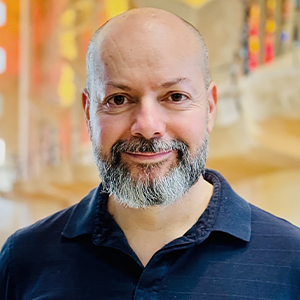
Rod Solar
Founder & Scalable Business Advisor
For over 20 years, I’ve helped ophthalmology entrepreneurs scale their private practices. I specialise in doubling revenue within three years by offering a proven framework, hands-on experience, and a team of experts who implement what works. We take the guesswork out of growth and scale, so you can focus on delivering exceptional patient care while maximising the value of your business.
LiveseySolar completely transformed the way we were approaching this… We’ve gone from having just the dream of having a practice to having a practice up and running with people making inquiries and booking for procedures… It’s extremely pleasing. We feel lucky we connected with LiveseySolar.
— Dr Matthew Russell, MBChB, FRANZCO, specialist ophthalmic surgeon and founder of VSON and OKKO

Laura Livesey
Founder & CEO
I’m the co-founder & CEO of LiveseySolar. I’ve developed powerful eye surgery marketing systems that increase patient volumes and profits for doctors, clinics, and hospitals, since 1997.
Rod and Laura know as much about marketing surgery to patients as I know about performing it. They are an expert in the field of laser eye surgery marketing. They know this industry inside out. I believe that they could help many companies in a variety of areas including marketing materials, sales training and marketing support for doctors.
— Prof. Dan Reinstein, MD MA FRSC DABO, founder of the London Vision Clinic, UK






